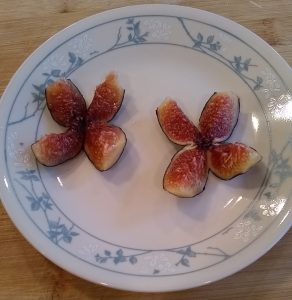
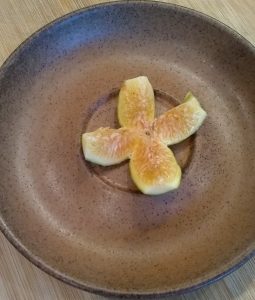
Num num!
Back in March, I made a post talking about trimming figs to optimize fig production rather than leaf production, Trimming Fig Trees. So, after trimming my trees, how were the figs producing?
Let’s see:
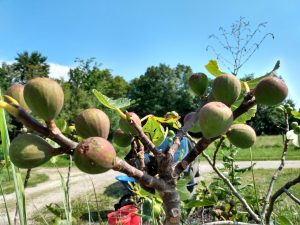
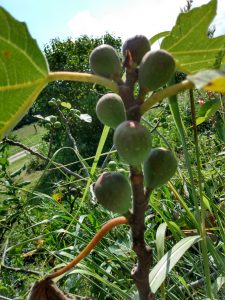
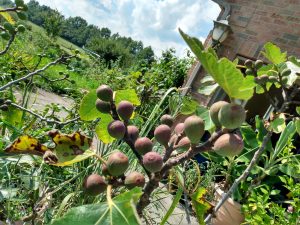
These pictures are from July. Lots of figs! That little bit of work in the spring really does pay off. Now, on to the fun part…
FIG HARVEST!
That’s the whole point, right? You trimmed these trees, you watered them (And let me stress, once the fig growth starts moving, I recommend watering twice a day as these babies get thirsty), you kept track of temperatures (Mainly to make sure the cool spring never dropped near frost temps), and fended off raccoons, cats, and husbands.
Wait, that was just me. One crazy raccoon, one male cat whom we’re trying to tame down to get him fixed, and a husband who really likes figs and doesn’t want to wait until they’re ready. Maybe I should make a Diabolical Baby Brigade post about that!
So, how do you tell that a fig is ready?
Do not jump the gun and pluck them from the tree just because they started getting plump and softening.
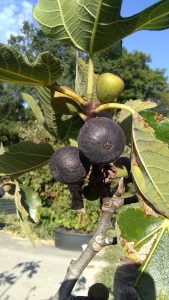
Though they will still taste a lot better than store bought, they aren’t technically ready. First, they will feel as softy and squishy as mashed potatoes when they are ready. BUT, the big indicator is what is known as the tear drop.
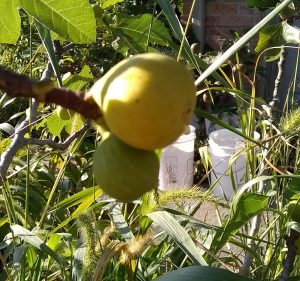
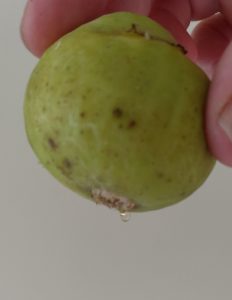
I tried really hard to zoom in on that little dot of syrup without the image going fuzzy. I’ve taken note: Get a better camera!
Anyways, at the base of the fig, a dot of what is actually syrup will appear. I’m going to admit, with the Negronne variety that I have, we don’t always wait for the tear drop on those because their flavor is so amazing that it’s hard to wait.
You should try to wait for the tear drop, though
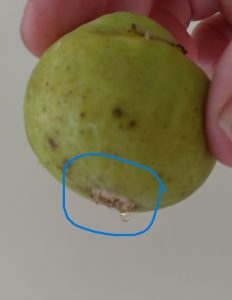
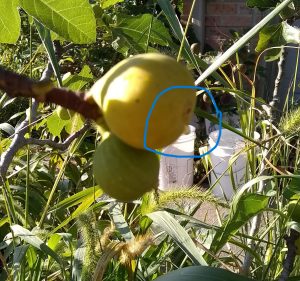
When you see that, simply give the figs a light pull, a little twist and they should fall right off of the tree. The stems are not to be eaten, so avoid those. Otherwise, get ready for some amazing deliciousness.


So syrupy and sweet
Give your mouth a treat!